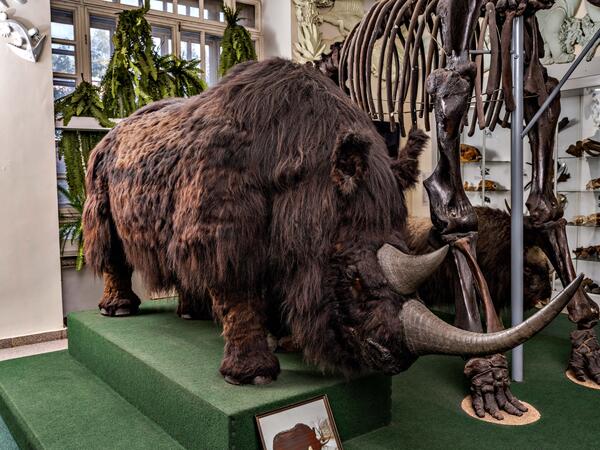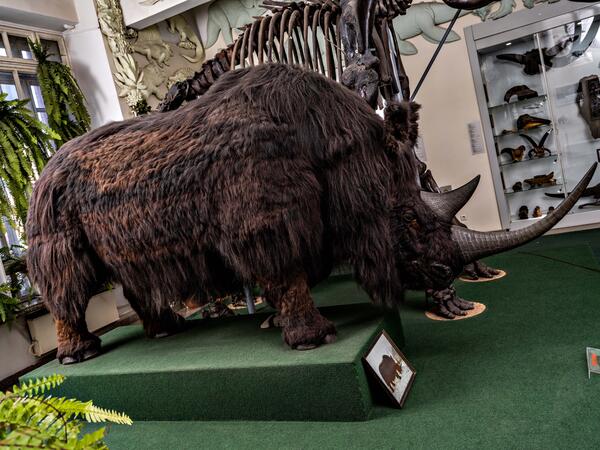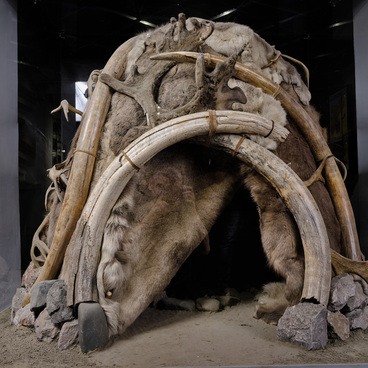The wooly rhinoceros lived in Siberia during the Pleistocene epoch. It was up to 170 centimeters at the withers, the length of its massive body was up to 3.5 meters, and its weight was up to 3 tons. This short-legged, stocky, powerful and very agile animal was second only to the mammoth in size and strength. Like the black rhinoceros, it was probably short-sighted, so it was fearful and aggressive.
The ancient rhinoceros was perfectly armed. Two large horns grew on its nose and forehead. The larger one weighed 10 kilograms and reached 130 centimeters in length, and the smaller one — 50 centimeters. The horn of the wooly rhinoceros was not round, but flattened at the sides and curved like a saber.
Wooly rhinos lived in cold steppe-tundra, in wide floodplains of rivers and along the banks of lake basins. In the dense vegetation of marshy lowlands rhinoceroses found food — young scions of deciduous trees: willow, alder and birch.
Rhinoceroses were individual animals and never gathered in herds. Once every three to four years, a female gave birth to a calf, which grazed near her for several months and then left in search of its own territory. Rhinos were well adapted to the harsh climate of the Ice Age: their bodies were covered with thick light brown fur. Like that of the mammoth, it consisted of a fine, dense underfur and long, stiff hair, which hung down low on the sides and formed a small mane on the withers and neck.
The extinction of the wooly rhinoceros began during global warming and glacial retreat. In the conditions of the new climate, the height of the snow cover increased sharply, to which the wooly rhinoceros was poorly adapted. In the snow deeper than 40 centimeters rhinos fell through, bogged down on their abdomens and became helpless.
As a result of warming, tundras and steppes were
overgrown with forests, and the food base of
rhinoceros narrowed. Cavemen accelerated the extinction process of the
wooly rhinoceros, which completely disappeared about 15–20 thousand years ago.
Most remains of these animals are found in Siberia. The exposition of the
Krasnoyarsk Museum presents a full-size model of a wooly rhinoceros.



